- 7 Top Flite Golf Clubs XL for Improved Performance - September 28, 2024
- Top Flite Golf Clubs: Top 5 Reasons to Choose Them - September 28, 2024
- Top 3 Golf Club Fitters for a Perfect Swing - September 28, 2024
When it comes to understanding standard golf club lengths, knowing the correct measurements is essential. To measure club length accurately, place the club in a playing position with the sole on the ground, and measure from the heel to the edge of the grip cap using a ruler. Standard lengths vary by club type, with drivers ranging from 44 to 45 inches, irons from 35 to 40 inches, and putters from 33 to 35 inches. Factors like height, wrist-to-floor measurement, and swing style also influence ideal club length. Now that you've got the basics, see how customizing your club length can elevate your game.
Key Takeaways
- Standard golf club lengths vary by club type, with drivers ranging from 44 to 45 inches, irons from 35 to 40 inches, and putters from 33 to 35 inches.
- Accurate measurement involves placing the club in a playing position, with the sole on the ground, and measuring from the heel to the edge of the grip cap.
- Wrist-to-floor measurement is crucial for determining ideal club length, as it accounts for individual posture, arm length, and swing style.
- Club length charts can assist in determining appropriate sizes, but individual measurements are essential for proper club fitting and optimal performance.
Understanding Club Length Measurements
When measuring golf club length, it's vital to understand the correct technique to guarantee accurate assessment of the club's size.
To do this, place the club in a playing position with the sole touching the ground, and position the ruler along the backside, touching the ground at the heel. This method assures a precise measurement from the bottom of the grip to the ground, which is the standard length golf clubs are measured by.
You can refer to a club length chart to determine the proper length for your club. It's important to note that different methods, such as the Long Drivers of America method, may yield varying results. For instance, driver length is measured with the shaft flat against a wall, resulting in a longer length.
To enhance precision, consider using a Dynacraft Bench Ruler Soleplate, which aligns the club sole against a roll pin for consistent results across measurements.
Importance of Correct Club Length
Accurate club length measurement is only half the battle – now it's time to understand why the correct length is vital to your game.
When you're playing with clubs that are the right length for you, you'll notice a significant difference in your performance. A standard club length is essential, as it allows you to maintain a comfortable stance and swing, ultimately leading to more power and precision in your shots.
If your clubs are too short, you'll likely hunch over, compromising your posture and swing mechanics. On the other hand, if they're too long, you'll stand too upright, affecting your control and consistency.
Determining the correct club length based on your height and wrist-to-floor measurements can be a game-changer. It's not just about getting the standard club length right; it's about finding the length that works best for you.
Measuring Club Length Accurately
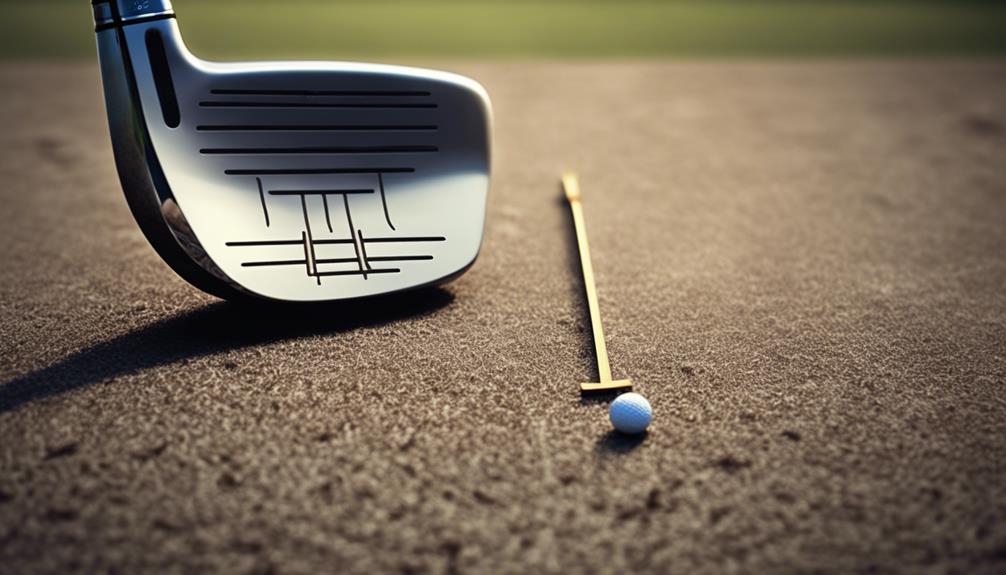
You'll need to employ precise methods to measure club length accurately, as small discrepancies can greatly impact your game. In club fitting, proper length is vital, and it starts with accurate measurements.
The most common method involves placing the club in a playing position, with the sole touching the ground, and taking a measurement from the heel to the edge of the grip cap using a ruler. However, the USGA method uses an angle iron stop at a 60-degree angle, measuring to the end of the grip cap.
Consistency is key, and tools like jigs or fixtures can enhance precision by guaranteeing the club sole is properly aligned against a fixed point. When measuring shaft lengths, it's important to take into account the wrist-to-floor measurement to guarantee the club is the right fit for your swing.
Standard Lengths for Drivers
Golfers typically opt for drivers that fall within a standard length range. For men's drivers, this range is usually between 44 and 45 inches, while women's drivers tend to measure between 43 and 44 inches.
When choosing the right length, it's crucial to take into account your swing style and club head speed. A driver that's too long can be difficult to control, while one that's too short may sacrifice distance. Finding the right length guarantees a consistent swing and peak performance.
You should aim to find a driver that allows you to maintain a comfortable posture and generate sufficient power. Keep in mind that standard lengths are guidelines, and you may need to adjust based on your individual needs.
Experimenting with different lengths can help you determine the ideal fit. Remember, the goal is to find a driver that feels comfortable and allows you to achieve your best results.
Iron and Hybrid Club Lengths
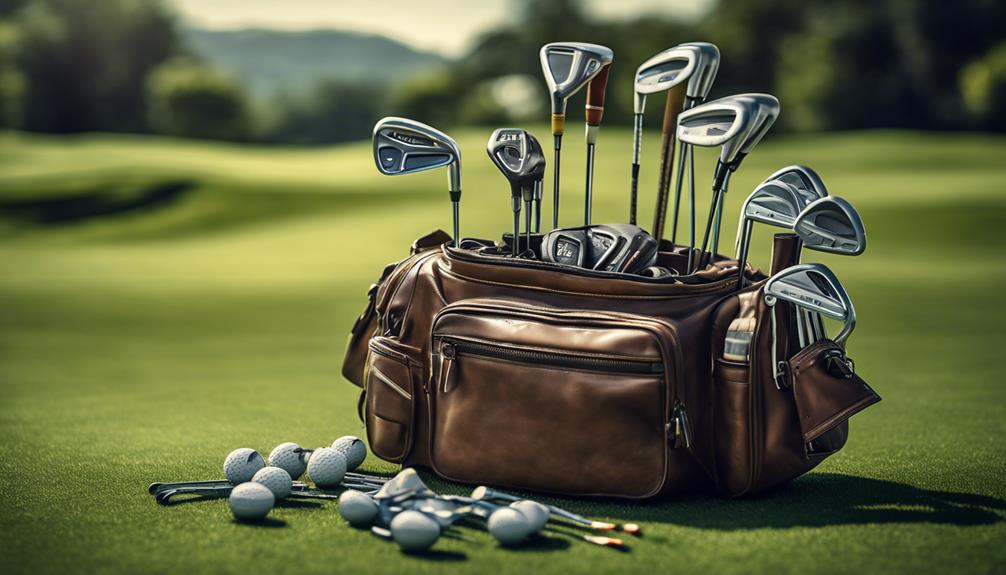
When selecting irons and hybrids, understanding the standard lengths for each club is essential for achieving a consistent swing and ideal performance. As a golfer, you need to take into account your height and swing style to find the perfect fit.
Here are the standard lengths for irons and hybrids:
- Iron club lengths:
- 2-iron (40 inches)
- 5-iron (37 inches)
- 9-iron (35 inches)
- Each higher numbered iron decreases in length.
- Hybrid club lengths:
- #3 hybrid (approximately 39 inches, 235g).
- Wedge lengths:
- Pitching wedges (PW) and gap wedges (GW) range from 34.5 to 36 inches in length and weigh between 291-295g.
- Specialty wedges:
- Sand wedges (SW) and lob wedges (LW) can vary from 34.25 to 35.75 inches in length, with weights starting at 296g or more.
Putter and Chipper Lengths Explained
Understanding putter and chipper lengths is essential, as they directly impact your comfort, stance, and overall performance on the green.
When it comes to putter lengths, you'll typically find unisex options ranging from 33 to 35 inches, allowing you to choose the perfect fit based on personal preference and comfort. However, if you prefer arm lock putters, designed for stability during the putting stroke, you'll find lengths ranging from 35 to 38 inches, catering to different player heights and styles.
Chippers, also unisex, have lengths that generally correspond to head weight. For instance, a chipper with a 315g head typically matches standard putter lengths. If you're using a chipper with a lighter head weight of 285g, the length will often be equivalent to that of a steel 9-iron, highlighting the importance of weight in determining club length.
It's also worth noting that both graphite and steel putters are typically manufactured to the same lengths, ensuring consistency in performance across different materials. By understanding these nuances, you'll be better equipped to find the perfect putter and chipper lengths to elevate your game.
Wrist-to-Floor Measurement Method
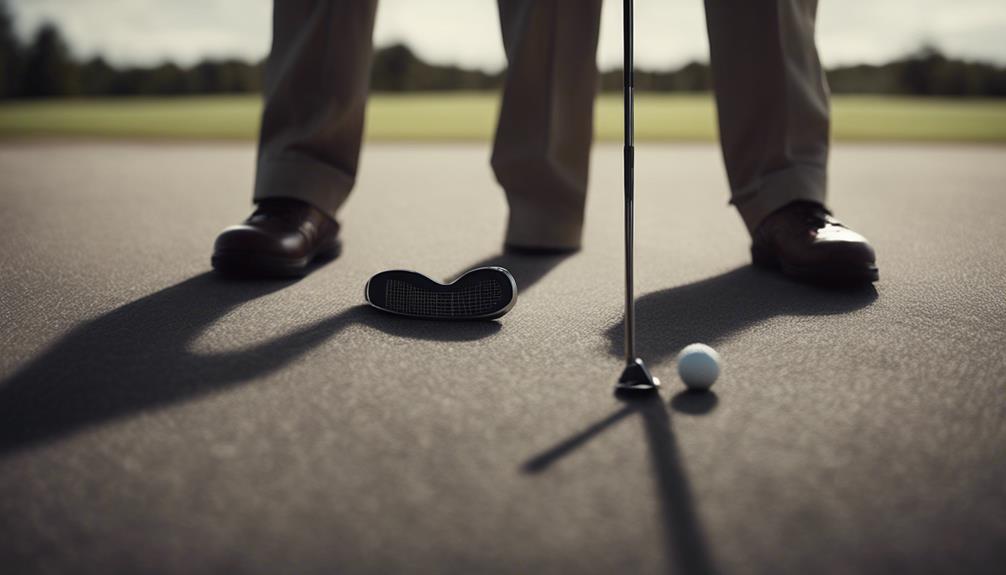
As you move on to determining your ideal golf club length, it's crucial to master the wrist-to-floor measurement method.
You'll need to accurately measure the distance from the crease in your wrist to the ground, which requires standing on a hard surface with your arms hanging straight down.
Accurate Measurement Techniques
To guarantee an accurate representation of your posture and arm length, take the wrist-to-floor measurement by standing in a relaxed position with your arms hanging straight down at your sides. This method provides a more precise calculation of your arm length compared to relying solely on your height.
To verify correct length, follow these guidelines:
- Wear regular shoes: Take the measurement while wearing your regular street shoes or sneakers on a hard floor.
- Get assistance: Have someone assist you to verify accuracy and precision.
- Stand relaxed: Maintain a relaxed posture with your arms hanging straight down at your sides.
Measuring Wrist-to-Floor Distance
By taking the wrist-to-floor measurement, you'll get a precise calculation of your arm length, which is vital in determining the ideal length of your golf clubs.
To get an accurate measurement, stand in a relaxed position with your arms hanging straight down at your sides, and measure the distance from your wrist to the floor. This method provides a more accurate representation of your posture and arm length compared to height alone. For best results, wear regular street shoes or sneakers and stand on a hard floor.
This measurement is essential in determining the best length of golf clubs to suit your individual swing style and posture. A professional fitting session may incorporate the wrist-to-floor measurement alongside other metrics for a thorough assessment of club length needs.
Importance of Correct Fit
You'll markedly improve your golf game by guaranteeing your clubs fit you precisely, and the wrist-to-floor measurement is an essential factor in achieving this correct fit. This measurement is critical because it takes into account individual differences in posture and arm length, providing a more personalized fitting compared to using height alone.
Here are four key benefits of using the wrist-to-floor measurement to achieve a correct fit:
- Accurate club length: By incorporating your wrist-to-floor measurement, you can determine the ideal club length that promotes a proper stance and swing.
- Improved comfort: Custom fitting based on wrist-to-floor measurement guarantees that your clubs feel comfortable in your hands, reducing fatigue and improving your overall golfing experience.
- Enhanced performance: With clubs that fit you precisely, you'll be able to maintain a consistent swing and improve your accuracy and consistency on the course.
Club Length and Height Relationship
As golfers vary in height, a critical aspect of club fitting emerges: the direct correlation between club length and a golfer's height, which greatly impacts swing mechanics and overall performance.
You'll notice that standard club lengths are designed for the average golfer, typically around 5'8" tall. For drivers, this means a length of 44-45 inches for men and 43-44 inches for women. Irons, on the other hand, have a standard length of about 35 inches, with variations depending on the club number and your height.
However, if you're taller than 6 feet, you may need an additional half inch to an inch in club length to accommodate your height and maintain proper posture. Conversely, if you're under 5'7", you might need to subtract half an inch to an inch from standard club lengths.
To determine the right club length for you, consider using the wrist-to-floor measurement technique, which takes into account your arm length and swing style. This personalized approach guarantees you get the perfect fit, optimizing your swing efficiency and overall game.
Benefits of Customized Club Length
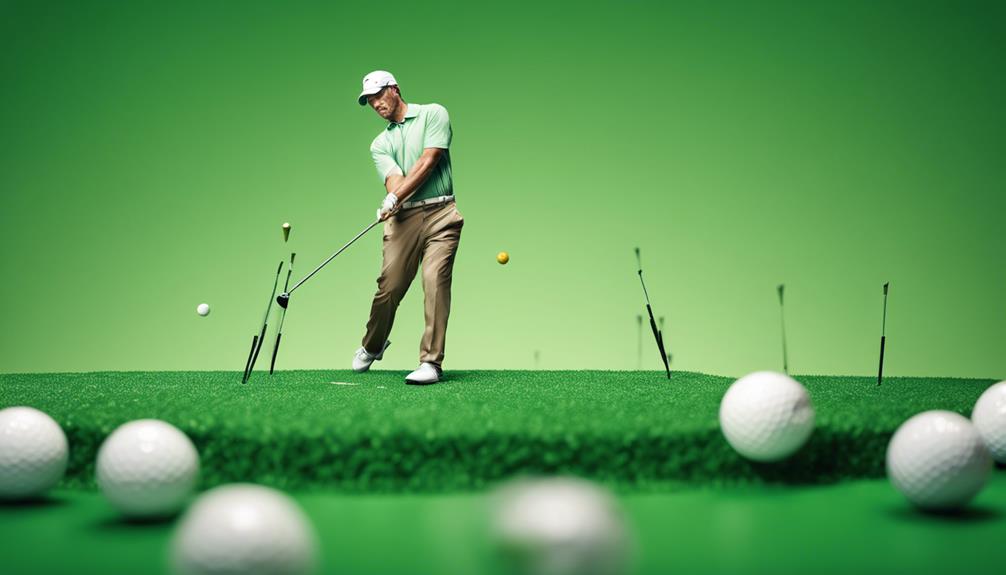
Fitted with clubs that match their unique physical characteristics, golfers can reap a multitude of benefits, from improved swing mechanics to enhanced overall performance. By using customized club lengths, you can experience a significant boost in your game.
Here are just a few advantages you can expect:
- Improved swing mechanics: With a correct club length, you'll maintain a more natural posture, reducing the risk of injury from improper stance.
- Increased accuracy and consistency: You'll make fewer compensatory movements during your swing, resulting in more accurate and consistent shots.
- Better distance control: The right club length allows for a more effective transfer of power from your body to the club, giving you greater control over your shots.
Common Club Length Measurement Mistakes
When measuring club length, you'll want to avoid common mistakes that can affect your fit.
You're not just measuring the club itself, but how it interacts with your body – which means you need to take into account your wrist measurements, swing style, and posture.
Incorrect Wrist Measurements
You'll likely get inaccurate club length recommendations if you don't stand in a relaxed position with your arms hanging straight down during wrist measurements. This common mistake can lead to clubs that are either too long or too short, affecting your overall game.
To guarantee accurate club fitting, it's crucial to avoid these errors:
- Wearing shoes during measurement: Take your measurements barefoot to get an accurate wrist-to-floor distance.
- Incorrect measuring tool placement: Position the measuring tool correctly at the crease of your wrist to avoid discrepancies of up to an inch.
- Ignoring posture variations: Account for your individual posture during measurements to guarantee clubs that suit your natural stance and swing.
Inconsistent Swing Styles
Inconsistent swing styles often stem from inaccurate club length measurements, which can force you to compensate with your technique, ultimately hindering your overall performance.
When you measure golf club lengths incorrectly, you may end up with clubs that don't suit your natural swing style. This can lead to a mismatch between your swing and the club, forcing you to adjust your technique to compensate. However, this compensation can negatively impact your overall game.
One important factor to take into account is the shaft length. Finding the right club length is vital, as it affects your posture, balance, and overall swing mechanics. If you don't measure the club length accurately, you may end up with a club that's too long or too short, leading to inconsistent swings.
Additionally, failing to account for the lie angle during measurements can produce inconsistent results. Using different measurement methods can also yield varying results, making it important to choose a consistent method.
Ignoring Posture Effects
By neglecting to reflect on your posture during club length measurements, you risk ending up with clubs that don't align with your natural swing dynamics, ultimately affecting your overall performance. When measuring, it's important to take into account your posture, as it impacts your effective reach and swing mechanics.
Here are some key points to keep in mind:
- Wrist crease to floor measurement: This metric accounts for your arm length and natural posture, guaranteeing an accurate assessment of your club length needs.
- Relaxed standing position: It's significant to stand in a relaxed position during measurement, as tension or unnatural postures can skew the results.
- True playing position: The club is measured in its true playing position to guarantee accuracy and prevent misalignments that can lead to length variations of +/- 1/8 inch.
Choosing the Right Club Length for You
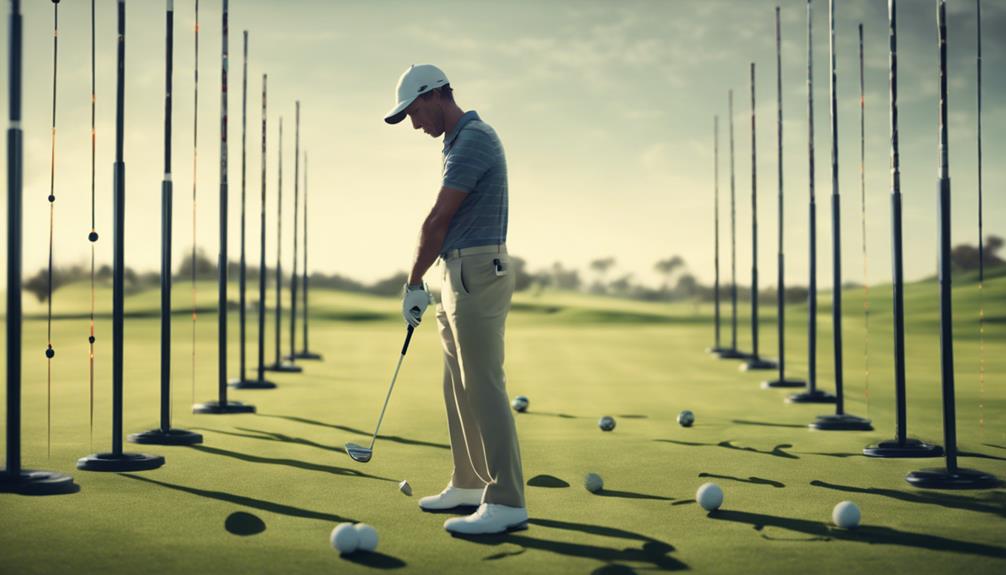
Determine your ideal club length by evaluating your physical characteristics, swing style, and personal preferences to guarantee a comfortable and consistent game.
When selecting the right golf clubs, it's crucial to reflect on your height, as it directly affects the club-to-suit ratio. For instance, taller golfers may need to add half an inch to an inch to their club length, while shorter golfers may require reductions of the same amount. A more precise method is to use wrist-to-floor measurement, which takes into account how far you hold your clubs from the ground.
Beginners can benefit from using a club length chart based on height to select the appropriate club length, enhancing their overall comfort and performance in the game.
Remember, the standard driver length ranges from 44 to 45 inches for men and 43 to 44 inches for women, affecting distance and control. Irons also have specific lengths, starting at 35 inches for putters and wedges, and progressively decreasing with higher numbered irons.
Resources for Further Learning
You can further refine your understanding of club lengths by exploring the wealth of online resources, professional fitting services, and manufacturer guidelines available to help you optimize your game.
To take your knowledge to the next level, consider the following resources:
- Online Guides: Websites offering detailed charts and guides to match your height and wrist-to-floor measurements with appropriate club lengths.
- Professional Fitting Services: Expert assessments that include dynamic fitting techniques to determine the best club lengths based on your swing.
- Manufacturer Guidelines: Golf club manufacturers publish their own length measurement standards, which can vary, so it's crucial to consult brand-specific guides for accurate fitting.
Frequently Asked Questions
How to Determine What Length Golf Clubs You Need?
To determine the right length golf clubs for you, consider a professional club fitting, which includes swing analysis, to identify custom adjustments that can greatly influence your performance, ensuring ideal results.
How Do You Size Golf Clubs for Your Height?
You size golf clubs for your height by considering the impact of your height on swing mechanics, making equipment adjustments through custom club fitting to guarantee peak performance, and factoring in the precise correlation between height and club length.
How Do You Measure Length of a Golf Club?
When measuring a golf club's length, you'll use club measurement techniques like placing the club in a playing position with a measuring tape along the backside, ensuring accurate shaft length impact on your club fitting process.
What Is the Standard Length for Men's Golf Irons?
'Surprisingly, you're not alone in wondering about men's iron specifications! Average club lengths, ranging from 39 inches for 3-irons to 35 inches for 9-irons, can greatly impact performance, making fitting adjustments essential for ideal play.'
Conclusion
As you walk onto the course, confidence in your swing is essential, but so is accuracy in your club length.
Having the wrong length can feel like swinging a foreign object, while the right fit is like slipping into a comfortable glove.
Don't let incorrect measurements hold you back – take control of your game by understanding standard club lengths and customizing to your unique needs.
The difference between mediocre and mastery lies in the details, so get measured up and take your swing to the next level.




